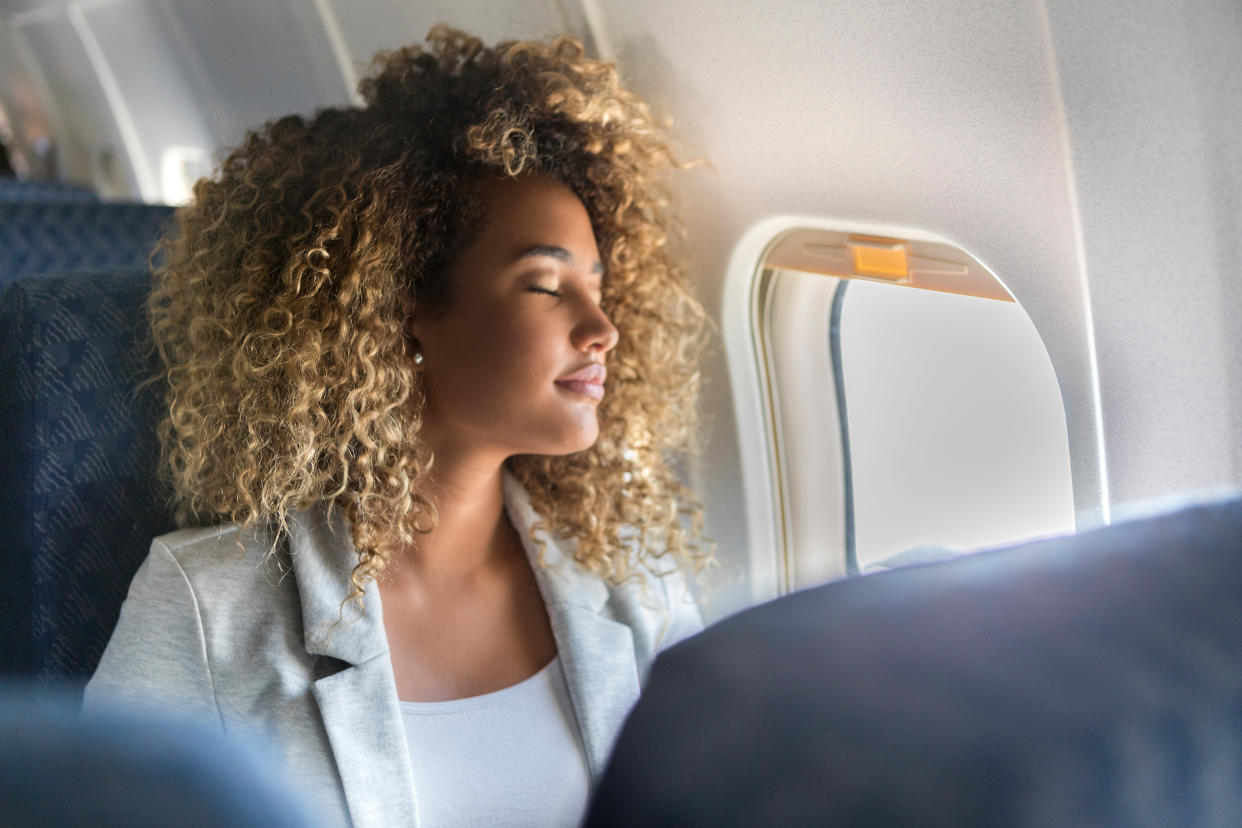How to sleep on a plane, from uncrossing your legs to making a tactical seat choice

For a lucky few, getting to sleep on a plane is easy. But for the vast majority, nodding off at 35,000ft is no mean feat. Stiff seats, no leg room and the constant drone of the jet’s engine in your ears is hardly conducive to a good kip in the air.
Thankfully, there are a few tricks that will help you sleep during your next flight this summer, from cutting out the booze to uncrossing your legs.
How to sleep better on a plane
1. Make a tactical seat choice
Easier said than done, you may think. Sure, most airlines charge a supplement for seat selection, but if you arrive early enough at check in, you may be able to ask for a specific seat for free.
And it could well be worth coughing up the supplement (usually around £20 for a long-haul flight) if it means you’ll sleep better.
Here's what to do:
Secure a window seat – this will give you have something to lean against, stop other passengers scrambling over you, and let you control the window shade.
Avoid the back row – the seats may not recline and they are usually located closest to the bathrooms, which can be noisy and smelly.
Sit over the wings or at the front of the aircraft – this will help you to avoid feeling turbulence.
2. Consider upgrading
It might seem like an unnecessary expense, but upgrading could mean the difference between good sleep or no sleep. "My tip would be to get as high a class as possible," says expert James Wilson aka The Sleep Geek. "Being able to lay down fully really helps."
Getting an upgrade may not be as costly as you think, either. Inbound flight upgrades are better value, as you avoid the high air passenger duty levied for flights departing the UK.
Flights from the east coast of the US can be upgraded to Premium Economy from just £80 with Trailfinders, while upgrading to a flatbed in Business Class costs a hefty £500 upwards.
Of course, if this isn't possible, there are still plenty of other hacks...
3. Block out background noise
Sharing sleeping quarters with 300-odd other passengers isn't ideal, so packing ear plugs is a must.
For an even quieter experience, splash out on a decent pair of noise-cancelling headphones, like these from Bose, which will also mean you’ll hear and enjoy the in-flight entertainment better.
When it’s time to get some rest, listening to relaxing music or a sleep app, like the White Noise app, should help you drift off.
4. Embrace darkness
An eye mask will help you control your sleeping environment on long-haul flights – you won't be disturbed by the changing light patterns inside the cabin, or a fellow passenger letting sunlight in with the blind up.
Travel writer Travis Levius swears by eye masks. "One of my recent journeys included a 13-hour flight from Doha to New York (JFK), and having an eye mask to block out the light made for a smooth sleep."
5. Avoid booze and caffeine
When the drinks trolley comes round, a glass or two of red wine might seem like the perfect tonic to help you fall asleep. But alcohol actually disrupts sleep and will leave you dehydrated.
Likewise, it’s not a good idea to consume caffeine before you try to catch some shut-eye, so avoid the temptation of a cup of coffee before boarding – sip water throughout your flight instead.
6. Take a neck pillow
The trusty neck pillow will keep your neck nicely supported as you drift off. Paying a little more for a good quality model is money well spent. Try the Cabeau Evolution Memory Foam Travel Pillow and the Trtl wraparound.
7. Uncross your legs
Many of us cross our legs when we sit down – but this can hinder the blood flow on one side and place strain on your lower back. It’s better and more comfortable on long flights where you need to sleep, to keep your legs parallel with your knees slightly bent.
8. Put your feet up
If you’re flying in economy class, you can still try to get as comfy as possible. Claire Woods from Trailfinders swears by feet hammocks.
"They allow you to get closer to the horizontal we would all love to be in on overnight flights," she says. The nifty device, like this one, clips easily on the tray table, allowing your legs to stretch in all directions to relieve muscle fatigue.
9. Read a book
Instead of having a movie marathon, pick up a book or magazine. TV screens (and other electronic devices) emit blue light, which prevents sleep hormones from being produced and reduces your chances of nodding off. Reading a book, on the other hand, can help you doze more easily.
10. Get into your routine
If you have a bedtime routine at home, try to follow it on the plane, too. Peter Douglas from Trailfinders says: "Try and replicate your own bedtime routine so ideally change into pyjamas or baggy clothes as you usually would, and have a similar pre-bed drink or do whatever you do at home. This will help your brain think it is ready to sleep."
You could also try rolling relaxing lavender oil on your pulse points (neck, wrists and behind the knees). Happy snoozing...



